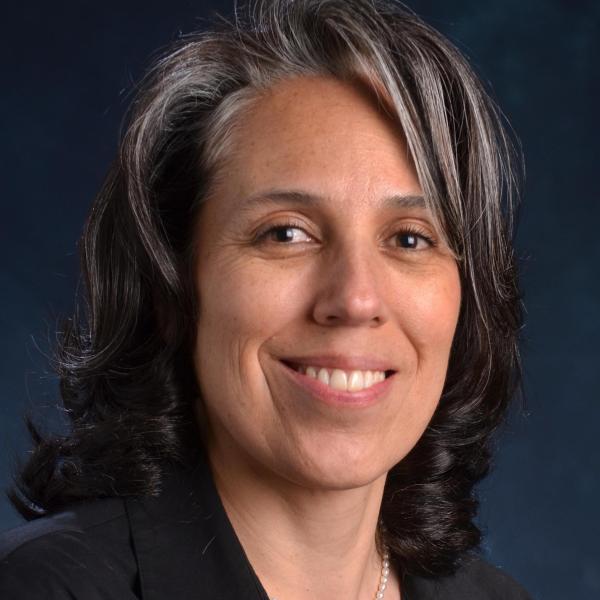What's Your Plan? A Symposium on Education for Fall 2020
Held on Monday, July 27 | 12-4 p.m.
Whether teaching hybrid, remote, or online, each of us needs a plan for the fall.
To help you achieve a plan that fits your particular style of teaching, the College of Engineering and Applied Science hosted “What’s Your Plan? A Symposium on Education for Fall 2020.”
The symposium featured a series of roundtable discussions, offering a space for conversation around core themes to help faculty members get to their plans, one that they craft based on their needs. Five topics were addressed in 30-minute discussions and repeated four times.
Need more resources? Visit the Going the Distance webpage for additional seminars.
Key takeaways for fall semester planning
Topic A: Assessment
- Ken Anderson, supported by Viktoriya Oliynyk, led a discussion of student assessments and projects in a online and distance settings. Drawing from the ongoing conversation in the college, this roundtable included discussion of remote examination, group work and best practices. Key points and recommendations include:
- It is important to take into consideration the reality that our students are facing when designing our courses and their associated course policies.
- Our Gen Z students are a fundamentally different student population; they are part of a nationwide mental health crisis being experienced by all of higher education, not just CU, and they are living in a time of major political unrest amid a global pandemic.
- We recommend revising course structures and their associated assessment and course policies with simplicity and flexibility in mind.
- We are not saying that courses should be easy; instead, we are saying that the structure and goals of the course should be clear and we should focus on teaching students the fundamentals of the topic domain as opposed to trying to cover all aspects of the domain.
- A key recommendation is to move away from course structures that rely on a few high-stakes exams to ones that have more frequent, lower-stakes assessments like homeworks and quizzes.
- We also encourage the use of take-home exams, oral exams, and projects in place of high-stakes timed exams to help our students on their academic journeys this semester.
- Another key recommendation is to support this wider range of lower-stakes assessments with flexible course policies that allow, e.g., students to drop their lowest homework or quiz score, or provide students with the means of demonstrating that they now understand a concept that they didn’t understand earlier in the semester (known as mastery-based learning)
- The college has released a report from the remote exam working group that addresses many of these issues in more detail, adds a discussion related to academic intregrity, and makes recommendations on how to create/administer remote exams. This report can serve as a resource to faculty interested in topics related to assessment.
Topic B: Wellness
- Rhonda Hoenigman and Donna Hall presented on early intervention strategies and using analytics to recognize patterns in student behavior. They covered barriers to learning, analytics available in Canvas, and the importance of setting up a platform that recognizes student needs. Key points and recommendations include:
- Be intentional: Students may drop out of class, so be intentional about checking in with students through Zoom polls, Zoom open office hours, and TA check-ins.
- Be social: Think about social activities that bring students together in Zoom or in person.
- Be human: It is OK to tell students that this is a difficult time.
- Use Canvas resources: Canvas has analytics tools that we can use to track student engagement and help us realize when they are not engaging.
Topic C: Engagement
- This session focused creating a positive learning community in the virtual world. Chris Koehler, with support from William Kuskin, discussed his experience teaching in the Space Minor and successfully transitioning that course over to Zoom. Key points and recommendations include:
- Chunking lecture class into 10-minute sections.
- Shaking the students intellectually to break them out of a pattern.
- Switching how the content is delivered—through video, text, and lecture—so the students exercise different kinds of focus.
- Flip all or part of the classroom (perfect for remote).
- Voice: give students a way to be heard by utilizing email, Canvas, Zoom polling, or Slack so that they can react to the lesson.
- Listen: listen to what they have to say and tell them that you are listening.
- Encourage students to process the content.
- Share the instructional role. Give students a chance to teach and to lead the class.
- Give them shared experiences. Break them up into smaller sections and let them work thorugh problems.
- Challenge the students to to stretch their minds and their imagination.
- YOU! It is all up to you. Take the chance to experiment with your class, and your students will react positively.
- Engagement belongs to the students: Ultimately, the students will engage as much as the instructor gives them room to engage. If you share with them the experimental nature of fall, and allow them to participate, it is our belief they will.
- Content deliver vs. metacognition: As much as fall is a unique semester, it is worthwhile to ask what students will remember about it in years to come. Will they remember specific content or just that it was a laborious and difficult time? Perhaps it would be a good strategy to back out from the content somewhat and think about teaching metacognitive practices about learning how to learn.
Topic D: Communication
- Keith Graham and Wendy Young led a discussion on communication inside and outside of class. This includes (1) office hours; (2) different methods of student and TA interactions (Slack, email, Google Docs, etc.); (3) pre-semester information; (4) weekly check-ins; (5) homework reviews; and (6) remote lecture discussions. Key points and recommendations include:
- Reduce student and faculty stress
- Plan remote, augment on-campu
- Improve the efficacy of student instructional support
- Make permanent communication enhancements
- Remote Lectures
- Have a TA monitor the chat room
- If you are recording, inform class before you start and use the campus-provided statement in syllabus
- Zoom etiquette
- Consider requiring students to leave their cameras on (at least at start of class)
- Having zoom etiquette expectations can help with relationships (turn on cameras, use raised hand function or chat for questions)
- Zoom Meetings: Etiquette and Best Practices from University of Pittsburgh: www.technology.pitt.edu/blog/zoom-tips
- Office Hours
- Private/breakout rooms versus shared Zoom
- Breakout rooms can be effective if you have a large number of resources (i.e. TA in each room is ideal)
- OIT can set up pre-created breakout rooms for those who want collaborative teams working during a remote lecture (similar to collaborative group work in the classroom)
- Asynchronous office hours
- Create short 5-7 min videos on common issues and post
- Create “Bug List” that is shared on Google Doc with TAs; create another for students (can require login)
- Can give an asynchronous review for exams
- Some may hold optional outside office hours, for instance in Scott Carpenter Park; suggest placing markers such as cones where students can sit and be socially distant
- Private/breakout rooms versus shared Zoom
- Building relationships
- Small classes
- Spend five Zoom minutes with each student every other week
- Large classes
- Divide class up between all faculty and TAs and each person spend 5 minutes with each student weekly
- Flip classroom: teach online or remotely before lecture time, use lecture time to converse with students and answer their questions; can rotate students through the lecture time if you have a large class (i.e. switch out students every 15-20 mins)
- Small classes
- Other methods of communications?
- Email your students now to tell them your plans for the semester, even if they are just preliminary
- Office of Institutional Equity and Compliance offers a variety of educational resources: www.colorado.edu/oiec/education/educational-resources
- Check out the new 'Establishing Course Expectations and Managing Classroom Dynamics Guide.'
- Tips for educucational videos from Vanderbilt University: https://cft.vanderbilt.edu/guides-sub-pages/effective-educational-videos/
- Utilizing ELAs, SAs, and TAs
- Slack is a great way to do 1:1 meetings and general conversations
- Use the @channel function notify all members
- My students set up a Slack Channel named #daily-updates, and setup the Slackbot reminder to send the message every day at 9 a.m. with the following:
- By the end of the day reply to this thread with your updates for today. Please consider the following questions:
- What did you accomplish?
- How many hours did you work today?
- What do you plan to do next?
- What questions do have? or What do you need help with?
- By the end of the day reply to this thread with your updates for today. Please consider the following questions:
- Slack is a great way to do 1:1 meetings and general conversations
Topic E: Design
- Gear Up for Flexible Course Design (and How to Ensure Students are Along for the Ride). In this breakout session, Wendy Martin and Courtney Fell discussed flexibility in course design and how to incorporate student needs into the process. Topics included options for Canvas setup, content delivery and learning activities as well as how to include students in the design process. Key points and recommendations include:
- Communicate expectations for course communication.
- Map out your course.
- Rethink for remote teaching.
- Create and populate your Canvas site.
- Build in learner supports.
- Create a work schedule for students.
- Be prepared to provide referrals.
Moderators
Professor and Chair, Computer Science
Dr. Anderson co-directs the Center for Software and Society and leads that Center's Big Data Initiative and he co-directs Project EPIC, a $4 million NSF grant that investigates how members of the public make use of social media during times of mass emergency. In his copious spare time, Professor Anderson loves to read science fiction and fantasy novels and to teach his kids how to program.
Program Manager, Space Minor
Ms. Bailey is a CU Boulder aerospace engineering alumna. She worked at NASA’s Johnson Space Center building hardware, training astronauts, and as a mission flight controller, before returning to CU in February 2017 to manage the newly established Space Minor program. In addition to facilitating the minor, Ms. Bailey assists with the required Pathway to Space course and mentors hands-on student projects.
User Experience Researcher, OIT
Courtney came to CU in 2007 as a lecturer of Spanish language and transitioned to the Office of Information Technology in 2013. Since then, Courtney has supported course redesign initiatives such as ASEN 1969 Pathway to Space and first-year student initiatives such as the New Student Welcome project. Courtney now leads the User Experience Research efforts for the student-centered design and development of Buff Portal.
Deputy Director, Colorado Space Grant Consortium
Ms. Galvez has 20 years of experience with the Colorado Space Grant Consortium, helping to develop and coordinate the COSGC program, which includes 20 Colorado institutions of higher education. She is part of the team managing the NASA program, which provides an inclusive and interdisciplinary community of Colorado post-secondary students with experiences in Earth-based, sub-orbital and orbital projects/missions to prepare them for our nation’s future space programs.
Senior Instructor and Associate Chair for Undergraduate Education, Electrical, Computer & Energy Engineering
In addition to serving as the director of the ECEE Internship for Credit program, Mr. Graham is a prolific teacher covering topics such as embedded systems, mobile computing, and the Internet of Things security. Mr. Graham’s teaching experience includes distant sections and successfully transitioning a lab class to remote learning. Before joining CU, Mr. Graham worked at several startups where he developed, among other things, the first PC notebook with an integrated trackball and cellular modem.
Instructional Designer, Learning Design Group, Division of Continuing Education
As an instructional designer with 15 years' experience in higher education, Ms. Hall has collaborated with subject matter experts and faculty to design and implement innovative online, hybrid and face-to-face courses. She refers to herself as a “foodie” as she likes to discover new restaurants and cuisines in her free time.
Senior Instructor, Computer Science
Associate Dean for Undergraduate Education, CEAS
Dr. Hoeningham's research focuses on modeling underlying dynamics of relevant social issues such as hunger and food waste. She also coordinates with local relief agencies to affect change in her community by involving the community in her research, and using the research findings to inform community practices. She authored the book “Visualizing Data Structures” to fill the gaps found in typical textbooks and published it as an e-book to make it affordable.
Director, Colorado Space Grant Consortium
Director of the NASA’s Colorado Space Grant Consortium, Mr. Koehler is one of three developers of the Space Minor, the second most popular minor at CU Boulder. A CU alumnus who studied aerospace and mechanical engineering before working at Lockheed Martin in Denver, Mr. Koehler taught “Gateway to Space” for 19 years, a hands-on aerospace class for first-year students where they design, build, test, and fly a satellite to the edge of space.
Joint appointment in English in the College of Arts and Sciences and the Herbst Program in Engineering, Ethics & Society, CEAS
Faculty Director for Online Innovation, CEAS
Dr. Kuskin’s research and teaching span medieval literature and comic books. As vice provost for academic innovation, Dr. Kuskin created the Office of Academic Innovation and the Office of Global Engagement. In 2013, he launched the MOOC, “Comic Books and Graphic Novels,” which ultimately served over 70,000 students and received special mention by Coursera for its innovative delivery of humanities material.
W. Edwards Deming Professor of Management, Engineering Management Program
Ms. Martin’s area of expertise is on the application of statistics in an industrial environment, with an emphasis in Six Sigma, quality systems and reliability methods. She teaches courses on these topics, some of them entirely online. Prior to joining CU, Ms. Martin delivered training in quality methods to employees of both the Windsor Plant and Anheuser-Busch in Fort Collins and led her team to become the No. 1 ranked supplier to Anheuser-Busch for all commodities supplied.
K. Stanton Lewis Professor of Construction Engineering and Management, CEAE
Interim Dean, College of Engineering and Applied Science
Dr. Molenaar’s teaching and research focuses on risk analysis, alternative project delivery and cost estimating for infrastructure projects. He is the primary author of more than 150 technical reports and articles and been recognized by Public Works Magazine as a top 50 “Trendsetter” for his work in alternative contracting in the public sector.
Academic Technology Services Program Manager, OIT
Ms. Oliynyk has worked at the intersection of teaching and technology at CU Boulder for over 10 years. In her current role, she leads a team of learning technology consultants and oversees several academic technology services including Proctorio, PlayPosit, Digication and CUClickers. Viktoriya has MS in education management from Lviv Polytechnic National University and MEd in college student services administration from Oregon State University.
Senior Instructor, Civil, Environmental and Architectural Engineering
As co-leader of the Lighting Program in the Building Systems Engineering group within architectural engineering, Ms. Vasconez teaches architectural lighting application and design courses to AREN and environmental design students, co-directs the Rocky Mountain Lighting Academy, and manages the ENVD lighting design certificate. She has also worked in museum exhibition design.
Senior Instructor and Associate Chair, Chemical and Biological Engineering
Associate Chair for Undergraduate Education, Dr. Young focuses her time on improving the undergraduate experience. As an instructor for courses ranging from freshman-level Introduction to Chemical Engineering to senior-level Capstone Design, Dr. Young covers fundamental engineering concepts, applications of these fundaments in design, and professional development. Before joining CU, Dr. Young developed microprocessors in the lithography division at Intel.















